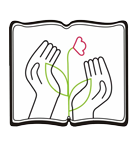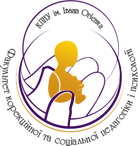of correctional education
(pedagogical sciences)
Kravchenko I., Moroz L., Stakhova L. Logorhythmics in the system of neuropsychological rehabilitation after the stroke
Contact: Iryna Kravchenko, lecturer at Logopedical department Sumy State Pedagogical University named after A.S. Makarenko, Sumy, Ukraine. Сircle of scientific interests: the problem of the influence of gaming, figurative activit, logorhythmics on the development of speech for children with speech disorders.
Moroz Ludmyla, Ph.D. in Pedagogy, Associate Professor, Logopedic Department of Sumy Makarenko state pedagogical university, Sumy, Ukraine. The scientific interests: the problem of support for children with developmental disorders; correction and development of motor functions in children with severe speech impairment, professional training of specialists in the field of special education.
Larisa Stakhova, Candidate of Pedagogical Sciences, Senior Lecturer in Speech Therapy Department of Sumy Makarenko State Pedagogical University, Sumy, Ukraine. In the field of scientific interests: the basics of corrective work with children with speech disorders.
The neuropsychological direction of rehabilitation of patients after the stroke with marked cognitive functions disorders (speech, memory, attention, perception and thinking) is highlighted in the article. The content and peculiarities of conducting logorhythmic sessions with persons who have suffered stroke are described on the basis of the Department of Speech Therapy A.S. Makarenko Sumy State Pedagogical University, in parallel with observation from a neurologist, visiting a group of therapeutic physical culture, physical therapy, classes logopedic classes in individual and group forms. During the early recovery period (2-6 months), patients aged 53 to 66
participated in logorhythmic classes. After examining their outpatient cards and consulting a neurologist, those whose speech status was indicated by aphasia were selected.
The training program was based on nonspecific principles of complexity of influence, formation of the patient’s active position on the way overcoming emergencies, premorbid person’s features and his current interests, necessity of restoration of personal and social status, priority of requests of the closest social environment.
Logorhythmic classes included listening to music, breathing exercises, articulatory and mimic exercises and elementary tasks for arbitrary attention, formation of operational support for verbal and non-verbal mental processes, singing, movements for music, dancing, alternate and simultaneous performance of several elements.
Logorhythmic exercises have been shown to functionally activate preserved but temporarily depressed brain areas. The Group sessions help patients overcoming external (and, more importantly, internal) barriers of communication and help building interpersonal relationships.
Key words: neuropsychological rehabilitation, stroke, logorhythmics, cognitive dysfunctions, speech disorders.



